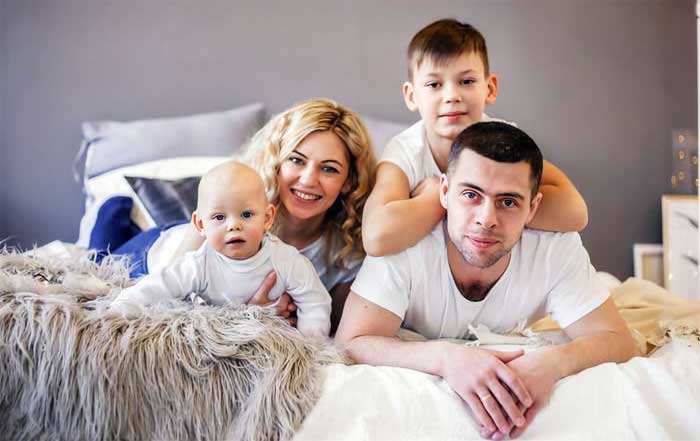In the digital economy, software is not merely a tool; it is the backbone of nearly every successful enterprise. Whether a company operates in retail, finance, healthcare, or manufacturing, its ability to remain competitive depends on how effectively it integrates software development into its business model. For business owners, understanding the fundamentals of software development is no longer optional—it is a strategic necessity. The most successful leaders of this decade are those who bridge the gap between business strategy and technology execution, fostering innovation through informed software initiatives.
As companies evolve in a world shaped by artificial intelligence, data analytics, and cloud computing, decision-makers must comprehend how custom software solutions enhance productivity, reduce costs, and drive scalability. Learning about modern software development allows entrepreneurs and executives to make more intelligent investments in technology, manage development teams more effectively, and align digital transformation goals with long-term business objectives. To better understand how software impacts business operations, readers can explore TradeProfession’s technology insights.
The Evolution of Software Development in the Business Landscape
Over the last two decades, software development has transitioned from a specialized technical function to a core element of strategic growth. Earlier, businesses relied heavily on off-the-shelf software from vendors like Microsoft, Oracle, or SAP to manage operations. However, with the rise of agile methodologies, cloud platforms, and open-source tools, organizations have shifted toward developing custom solutions tailored to their unique business processes.
This shift was accelerated by the COVID-19 pandemic, which compelled even small enterprises to digitize operations rapidly. In 2025, business owners recognize software not just as a back-office system but as a primary enabler of customer engagement, logistics optimization, and product innovation. Companies that adapt software to streamline workflows and analyze market data often outperform those that depend solely on static, pre-built tools. For deeper coverage on global technology trends, visit TradeProfession Global.
Core Concepts Every Business Owner Should Understand
For business owners unfamiliar with the intricacies of software engineering, it is essential to grasp the key concepts that define successful development projects. Understanding these principles ensures better communication with developers, more accurate project estimation, and reduced financial risk.
Software Development Lifecycle (SDLC)
The Software Development Lifecycle outlines the stages of a project—from initial planning to deployment and maintenance. Common models include Waterfall, Agile, and DevOps. In modern enterprises, Agile dominates due to its flexibility, enabling iterative development, continuous testing, and faster adaptation to user feedback. Tools like Jira and GitHub have become standard in tracking development progress and version control. Learning about these methodologies helps business owners anticipate project timelines and manage deliverables efficiently.
Frontend, Backend, and Full-Stack Development
The frontend represents the user interface—the part customers see and interact with—while the backend powers the server logic, databases, and application programming interfaces (APIs). A full-stack developer manages both sides, providing holistic oversight. Understanding the difference helps business owners decide whether to hire specialized or full-stack teams depending on project scope and budget. Learn more about innovation in business systems through TradeProfession Innovation.
APIs and Integration
Modern businesses rely heavily on integration between various software platforms—whether connecting payment gateways, CRM systems, or analytics dashboards. APIs (Application Programming Interfaces) facilitate this communication between systems. For instance, integrating accounting software like QuickBooks with e-commerce platforms enables real-time financial reporting. Understanding APIs empowers entrepreneurs to build interconnected ecosystems rather than isolated systems.
Building a Strong Software Development Team
Hiring the right software talent is one of the most critical decisions for any business owner embarking on a technology-driven transformation. In 2025, competition for skilled developers, designers, and data engineers remains intense, with top professionals often sought after globally. The structure of a high-performing development team includes key roles such as software engineers, UX/UI designers, quality assurance testers, and project managers.
Forward-thinking organizations emphasize cross-functional collaboration where technical experts work closely with business analysts and marketing teams to ensure product alignment with market needs. Outsourcing remains an attractive option for startups and mid-sized enterprises that cannot afford large in-house teams. Offshore development hubs in countries like India, Vietnam, and Poland provide cost-effective talent pools with advanced capabilities. Business leaders should evaluate vendors carefully, ensuring adherence to intellectual property laws and compliance standards. Learn more about sustainable hiring and employment models at TradeProfession Employment.
Software Development Models: Choosing What Fits Your Business
Choosing the right development model is crucial to aligning project execution with business objectives. Different models cater to various project complexities, team structures, and time constraints.
Waterfall Model
The Waterfall model follows a linear approach where each phase must be completed before the next begins. It is suitable for projects with fixed requirements and minimal expected changes. However, it can be rigid in today’s dynamic markets, where adaptability is critical.
Agile Model
In contrast, Agile development focuses on flexibility and collaboration. It involves breaking projects into smaller segments called sprints, allowing for rapid iteration and early feedback from stakeholders. This model is ideal for businesses that aim to launch quickly and continuously refine their products based on user insights. Learn more about how agile thinking fosters innovation on TradeProfession Business.
DevOps Integration
DevOps bridges development and operations, ensuring seamless deployment and continuous integration. By automating testing, deployment, and monitoring, it minimizes downtime and improves reliability. Many organizations in 2025 adopt DevOps culture using tools like Docker, Kubernetes, and Jenkins to deliver updates faster and more securely.
The Importance of Cloud Computing in Software Development
Cloud computing has become the cornerstone of modern software infrastructure. Rather than relying on physical servers, businesses now deploy applications through providers like Amazon Web Services (AWS), Microsoft Azure, and Google Cloud. Cloud platforms offer scalability, data redundancy, and security at a fraction of the cost of traditional data centers.
The rise of Software-as-a-Service (SaaS) and Platform-as-a-Service (PaaS) models enables even small businesses to build powerful applications without heavy capital expenditure. Cloud services also facilitate collaboration among remote teams, supporting the global trend toward distributed work environments. To explore more about technology transformation, visit TradeProfession Artificial Intelligence.
Software Development Interactive Guide
Explore key concepts, models, and technologies for business owners
📋Planning & Requirements
Define project scope, gather business requirements, identify stakeholders, and establish project goals and success metrics.
🎨Design & Architecture
Create system architecture, design user interfaces, define data models, and plan integration points with existing systems.
⚙️Development & Implementation
Write code, build features, implement APIs, integrate third-party services, and follow coding best practices and standards.
🧪Testing & Quality Assurance
Conduct unit testing, integration testing, security audits, performance optimization, and user acceptance testing.
🚀Deployment & Launch
Deploy to production servers, configure cloud infrastructure, set up monitoring tools, and execute go-live procedures.
🔧Maintenance & Support
Provide ongoing updates, fix bugs, implement security patches, monitor performance, and add new features based on feedback.
🔄 Waterfall Model
- Best for:Projects with fixed requirements and minimal changes
- Approach:Linear, sequential phases completed one at a time
- Advantages:Clear structure, well-documented, predictable timelines
- Challenges:Inflexible, difficult to accommodate changes mid-project
⚡ Agile Model
- Best for:Dynamic projects requiring flexibility and rapid iteration
- Approach:Iterative sprints with continuous feedback and adaptation
- Advantages:Flexible, fast market delivery, customer-focused
- Challenges:Requires active stakeholder involvement, less predictable
🔁 DevOps Integration
- Best for:Organizations prioritizing continuous delivery and automation
- Approach:Bridges development and operations with automated pipelines
- Advantages:Faster deployments, improved reliability, reduced downtime
- Challenges:Requires cultural shift, significant tooling investment
☁️ Cloud Computing
AWS, Azure, Google Cloud for scalable infrastructure
🤖 Artificial Intelligence
Machine learning, predictive analytics, automation
🔗 APIs & Integration
Connect systems, enable data flow, build ecosystems
📱 Mobile Development
Cross-platform apps with React Native, Flutter
⛓️ Blockchain
Decentralized systems, smart contracts, transparency
🌐 IoT Integration
Connected devices, real-time data, automation
💰 Typical Project Cost Distribution
2000-2010: Traditional Development Era
Businesses relied on off-the-shelf software from vendors like Microsoft, Oracle, and SAP. Waterfall methodology dominated with rigid, long development cycles.
2010-2015: Agile Revolution
Rise of agile methodologies and cloud platforms. Businesses began shifting toward custom solutions tailored to specific needs. DevOps practices emerged.
2015-2020: Cloud & Mobile First
Cloud computing became mainstream with AWS, Azure, and Google Cloud. Mobile apps and responsive design became essential. API-first architecture gained popularity.
2020-2022: Digital Acceleration
COVID-19 pandemic forced rapid digitization. Remote work tools, e-commerce platforms, and automation became critical for business survival.
2023-2025: AI-Driven Development
Artificial intelligence transforms software development. AI-assisted coding, low-code platforms, and intelligent automation redefine how businesses build and deploy software.
AI and Automation in Modern Software
Artificial intelligence (AI) has revolutionized software development and business operations alike. In 2025, AI-driven tools help developers write code more efficiently, detect vulnerabilities, and predict performance issues before deployment. For business owners, the integration of AI into software means smarter decision-making and predictive analytics that enhance customer engagement and operational forecasting.
Tools like GitHub Copilot and OpenAI Codex illustrate how AI-assisted programming accelerates the development cycle. On a broader scale, AI-powered applications like chatbots, recommendation systems, and automated analytics dashboards enhance user experience and business intelligence. To understand how AI is shaping entrepreneurship, see TradeProfession Founders.
Security and Compliance in Software Development
In an era where data is a critical business asset, cybersecurity and regulatory compliance have become fundamental pillars of software development. Business owners must ensure that their digital solutions protect both customer and corporate data from breaches, leaks, and unauthorized access. The increasing prevalence of cyberattacks, ransomware, and phishing attempts has driven organizations to implement robust security frameworks at every stage of development.
Modern software must adhere to security standards such as ISO/IEC 27001, SOC 2, and GDPR compliance for businesses operating in Europe or serving EU citizens. Data encryption, multi-factor authentication, and regular penetration testing have become essential security practices. Moreover, compliance with frameworks like HIPAA for healthcare or PCI-DSS for payment systems ensures that organizations meet legal and ethical standards. For business owners, understanding these regulatory requirements is not merely a matter of governance but a key factor in maintaining brand trust and customer loyalty. Learn more about global regulatory practices at TradeProfession Global.
Software Development for Different Business Sizes
Not all businesses have the same needs or resources when it comes to software development. The approach and tools that work for a large enterprise may not be suitable for a startup or small-to-medium enterprise (SME). Understanding these distinctions helps business owners plan realistic budgets and timelines.
Startups and Early-Stage Ventures
Startups typically require rapid prototyping and lean development processes to bring products to market quickly. Using open-source frameworks, low-code platforms, and cloud-based tools can significantly reduce development costs. Platforms like Firebase, AWS Amplify, and Bubble.io allow small teams to launch scalable applications without hiring large engineering teams. Startups should prioritize building minimum viable products (MVPs) that demonstrate functionality and gather user feedback early. Learn more about entrepreneurial innovation at TradeProfession Founders.
Small and Medium Enterprises (SMEs)
For SMEs, software development focuses on operational efficiency and growth. Custom enterprise resource planning (ERP) solutions, CRM integrations, and e-commerce systems help streamline workflows and enhance customer relationships. SMEs often benefit from outsourcing development to specialized agencies that can deliver reliable, cost-effective solutions. Cloud-based ERP tools like Odoo and NetSuite are particularly popular for growing businesses seeking scalability without high infrastructure costs.
Large Enterprises
Larger corporations operate in complex environments that require robust, multi-tiered systems integrated across departments and regions. Enterprise-grade software development demands meticulous planning, advanced architecture, and extensive testing. Many enterprises utilize microservices architecture and containerization to achieve modular, scalable solutions that can evolve independently. Technologies like Kubernetes and Docker Swarm enable efficient management of distributed systems, while machine learning and big data analytics enhance predictive insights and automation across departments.
The Cost of Software Development
Understanding the cost structure of software development projects is crucial for business owners. Costs vary based on project scope, technology stack, complexity, and geographical location of the development team. For example, hiring developers in North America or Western Europe is significantly more expensive than working with teams in Southeast Asia or Eastern Europe, where high-quality services are available at competitive rates.
Typical cost categories include design, development, testing, deployment, and maintenance. Hidden costs such as project management, third-party API integrations, and software licensing must also be considered. Transparent communication between developers and business owners during the budgeting phase prevents misunderstandings and overruns. To explore cost optimization strategies in technology, visit TradeProfession Investment.
Emerging Technologies Transforming Software Development
The software landscape in 2025 is evolving faster than ever, driven by disruptive technologies that redefine how systems are built, deployed, and maintained. For business owners, awareness of these trends ensures they make forward-looking decisions.
Artificial Intelligence and Machine Learning
Beyond automation, AI and machine learning (ML) now underpin predictive analytics, customer segmentation, and personalization across industries. Businesses integrate AI-driven insights into their applications to forecast demand, optimize logistics, and tailor marketing campaigns. Companies such as Salesforce, IBM Watson, and Google Cloud AI offer tools that empower organizations to make smarter, data-driven decisions.
Blockchain and Decentralized Systems
Blockchain technology extends beyond cryptocurrency into supply chain management, identity verification, and contract automation. Decentralized applications (dApps) built on platforms like Ethereum, Solana, and Polygon are becoming essential tools for transparency and trust in digital transactions. Learn more about blockchain adoption in business through TradeProfession Crypto.
Internet of Things (IoT)
The Internet of Things connects everyday devices—from smart thermostats to industrial sensors—enabling real-time data collection and automation. For businesses, IoT software development enhances operational visibility, predictive maintenance, and resource optimization. In manufacturing, logistics, and healthcare, IoT is driving intelligent ecosystems that boost efficiency and reduce waste.
Quantum Computing
Although still in its early stages, quantum computing represents the next frontier in software innovation. Businesses in finance, logistics, and materials science are already experimenting with quantum algorithms to solve complex optimization problems. While commercial adoption remains limited, forward-thinking enterprises are preparing for its long-term implications.
The Role of Project Management in Software Development
Successful software projects rely heavily on strong project management. Effective coordination between developers, designers, testers, and stakeholders ensures timely delivery and alignment with business objectives. Frameworks such as Scrum and Kanban have become the industry standard, emphasizing transparency, accountability, and continuous improvement.
Project managers act as the bridge between business owners and technical teams. They translate strategic goals into actionable milestones, track progress, and mitigate risks. Tools like Asana, Trello, and Jira support visual workflow management, while communication platforms like Slack and Microsoft Teams facilitate collaboration across time zones. For business leaders, understanding project management best practices ensures smoother implementation and higher return on investment. To explore leadership and executive insights, visit TradeProfession Executive.
Quality Assurance and Testing
No matter how skilled a development team is, software without rigorous testing can lead to costly errors and reputational damage. Quality assurance (QA) ensures the software functions as intended, remains secure, and delivers a seamless user experience. Modern QA practices include automated testing, unit testing, integration testing, and user acceptance testing (UAT).
Automated testing frameworks such as Selenium, JUnit, and TestComplete enable continuous validation of code during development. Businesses that prioritize QA enjoy reduced maintenance costs and improved customer satisfaction. Furthermore, incorporating user feedback loops through beta testing or soft launches allows companies to refine their products before full-scale release.
Software Development and Digital Transformation
Digital transformation is no longer a buzzword—it is a necessity for business survival. Software development lies at the core of this transformation, integrating technologies such as artificial intelligence, analytics, and automation into every aspect of operations. Companies that successfully digitize processes gain agility, improve decision-making, and create new revenue streams.
Industries such as finance, healthcare, retail, and logistics have already witnessed massive productivity gains from digital transformation initiatives. Fintech platforms, for instance, are reshaping how businesses and consumers interact with money through secure, real-time transactions. Learn more about financial technology advancements on TradeProfession Banking.
The Strategic Benefits of Custom Software Development
For business owners, the decision between adopting off-the-shelf software and developing custom solutions often determines long-term competitiveness. Custom software development provides tailored functionalities that align precisely with business objectives, offering flexibility and scalability that generic applications cannot match. This approach allows organizations to streamline processes, integrate systems seamlessly, and adapt quickly to changing market demands.
A well-designed custom platform can improve operational efficiency by automating repetitive tasks, reducing human error, and enhancing real-time decision-making through analytics. For example, a retail company might integrate inventory management, point-of-sale systems, and logistics tracking into a single unified dashboard, giving management full visibility into sales performance and supply chain efficiency. Moreover, custom development often provides a higher degree of data security since the system is designed with proprietary protocols rather than shared across multiple third-party users. Business leaders can explore innovation frameworks that support this approach through TradeProfession Innovation.
Custom-built software also facilitates better customer experiences. Businesses can create intuitive interfaces and personalized features that resonate with their audiences, strengthening loyalty and brand recognition. In the digital-first economy of 2025, companies that invest in bespoke applications stand out by delivering seamless interactions, whether through mobile apps, e-commerce portals, or customer service platforms powered by AI. As user expectations continue to evolve, custom development allows organizations to maintain agility and relevance in rapidly shifting industries.
Outsourcing Versus In-House Development
When deciding how to execute software projects, business owners must weigh the advantages of outsourcing versus in-house development. Each approach has its strengths, and the right choice depends on the organization’s size, technical capacity, and strategic goals.
Outsourcing Software Development
Outsourcing enables businesses to leverage specialized expertise from global talent pools while maintaining cost efficiency. This model is particularly advantageous for startups or mid-sized enterprises that lack internal technical resources. Outsourcing firms offer end-to-end solutions, covering design, development, and maintenance, often at lower costs than hiring a full-time internal team. Countries like India, Ukraine, and the Philippines have become global leaders in outsourcing due to their strong technical education systems and English proficiency.
However, successful outsourcing depends on clear communication, well-defined contracts, and strong project management. Business owners must ensure intellectual property rights are protected and that vendors adhere to quality and compliance standards. Time-zone differences and cultural variations can present challenges but can be mitigated with effective collaboration tools and well-established workflows. Learn more about employment models and management approaches at TradeProfession Employment.
In-House Software Development
In-house development, by contrast, offers greater control, communication, and cultural alignment. It allows teams to build institutional knowledge and maintain proprietary systems without reliance on third parties. For businesses handling sensitive data or developing strategic intellectual property, keeping development internal ensures better confidentiality and agility. However, this model requires significant upfront investment in recruitment, infrastructure, and training. Retaining top technical talent in competitive markets like the United States, Germany, or Singapore also presents ongoing challenges.
Ultimately, many successful businesses adopt hybrid models—retaining key development roles internally while outsourcing specific functions such as testing, maintenance, or front-end design to specialized partners. This blended approach combines strategic control with scalability and cost optimization.
Trends Defining Software Development in 2025
The software industry continues to evolve rapidly, shaped by technological breakthroughs and shifting consumer expectations. Business owners who anticipate these trends position their companies at the forefront of innovation.
Low-Code and No-Code Development
Low-code and no-code platforms democratize software creation by enabling non-technical users to build functional applications through visual interfaces. Solutions like OutSystems, AppSheet, and Microsoft Power Apps empower employees to automate workflows without deep programming knowledge. This movement reduces development bottlenecks and accelerates digital transformation across departments. Businesses can explore how these advancements align with sustainable digital strategies at TradeProfession Technology.
Edge Computing
As devices generate massive amounts of data, processing it closer to the source—known as edge computing—reduces latency and enhances performance. This technology is particularly relevant in sectors like healthcare, logistics, and manufacturing, where real-time data is crucial. By distributing computing tasks across edge networks, companies achieve faster response times and better data privacy.
Cross-Platform Development
With consumers using multiple devices, businesses must ensure seamless performance across web, mobile, and desktop platforms. Frameworks such as Flutter, React Native, and Xamarin allow developers to create cross-platform applications efficiently, reducing costs and time-to-market. This approach ensures consistent user experiences while maintaining native functionality.
Sustainable Software Engineering
As environmental responsibility becomes a global priority, businesses are adopting green software engineering principles to reduce the carbon footprint of their digital operations. Developers now optimize code to minimize computational load, energy consumption, and server usage. Data centers are increasingly powered by renewable energy sources, aligning technology operations with broader sustainability goals. Learn more about environmentally responsible innovation through TradeProfession Sustainable.
Integrating Software Development with Business Strategy
The most successful organizations view software not as a technical expense but as a strategic investment. By aligning software initiatives with corporate goals, companies can create long-term value, improve decision-making, and enhance competitiveness. This integration begins with executive leadership understanding how technology supports business outcomes.
For instance, analytics software can optimize pricing strategies, CRM systems can increase customer retention, and automation tools can reduce operating costs. Executives should define measurable objectives—such as improving efficiency by 20% or increasing digital sales by 30%—and ensure development teams build solutions that deliver those outcomes. Business owners can deepen their understanding of strategic leadership in technology through TradeProfession Executive.
Moreover, aligning software development with marketing, operations, and finance departments ensures consistency across the organization. Data-driven platforms allow departments to share insights and coordinate actions more effectively. For example, sales teams can use predictive analytics to identify high-value leads, while marketing teams adjust campaigns based on behavioral data from integrated dashboards. This level of alignment transforms software from an operational necessity into a strategic growth engine.
The Role of Data Analytics and Business Intelligence
Modern software thrives on data. Business intelligence (BI) and analytics tools empower organizations to turn raw data into actionable insights. By collecting and analyzing customer behavior, sales trends, and operational performance, businesses can make informed strategic decisions.
Leading BI platforms like Tableau, Power BI, and Looker provide visualization capabilities that help executives identify patterns and forecast market changes. Predictive analytics tools driven by machine learning can anticipate customer needs, detect fraud, and optimize inventory management. As data privacy regulations tighten globally, integrating analytics responsibly while protecting user information is essential for maintaining credibility and compliance.
Companies that effectively leverage data analytics experience measurable benefits in efficiency, revenue growth, and innovation. In competitive industries such as finance, healthcare, and e-commerce, data-driven decision-making has become a defining characteristic of market leaders. Business owners can explore more insights on data-driven growth strategies through TradeProfession Business.
Software Maintenance and Lifecycle Management
The launch of a software product is not the end of its journey but the beginning of continuous evolution. Maintenance ensures that applications remain secure, functional, and aligned with changing business requirements. This ongoing process includes bug fixing, security updates, performance optimization, and feature enhancements.
Neglecting maintenance can lead to vulnerabilities, reduced performance, and customer dissatisfaction. Regular updates not only enhance security but also demonstrate commitment to quality and user satisfaction. In 2025, businesses increasingly rely on continuous integration/continuous deployment (CI/CD) pipelines to automate updates, minimizing downtime while ensuring agility. Understanding how to manage long-term maintenance costs and processes is crucial to maximizing software ROI.
The Financial and Operational Impact of Software Development
Investing in software development has measurable financial implications that go beyond upfront costs. For business owners, understanding the total cost of ownership and return on investment (ROI) helps in planning sustainable growth. Well-executed software solutions often lead to exponential gains in efficiency, profitability, and customer satisfaction.
Operationally, automation reduces the dependency on manual processes, freeing teams to focus on strategic work. For instance, integrating software into accounting, logistics, and customer relationship management can cut costs significantly while improving accuracy. Cloud-based systems eliminate the need for expensive hardware maintenance, and AI-driven analytics optimize inventory, production schedules, and financial forecasting.
From a financial perspective, the ability to scale applications globally allows companies to reach wider audiences without proportionally increasing costs. Digital products—such as SaaS platforms—generate recurring revenue streams, creating long-term profitability. Business leaders who align software investments with strategic financial planning achieve better margins and stronger market resilience. For deeper insights into the economic implications of business technology, visit TradeProfession Economy.
Legal and Ethical Considerations in Software Development
As software becomes central to business operations, legal and ethical responsibilities grow in parallel. Business owners must ensure that development projects comply with intellectual property (IP) laws, data protection standards, and industry-specific regulations. Unauthorized use of third-party code or media can expose organizations to lawsuits and reputational damage.
Open-source licensing is another crucial aspect. While open-source tools accelerate development and reduce costs, they come with licensing obligations that dictate how software can be used or distributed. Understanding licenses such as MIT, GPL, and Apache 2.0 helps business owners avoid legal pitfalls.
Beyond legality, ethics plays a vital role in responsible software development. This includes ensuring accessibility for all users, avoiding algorithmic bias in AI-driven systems, and protecting user data privacy. Transparency in how software collects and processes data is increasingly demanded by consumers. Businesses that prioritize ethical practices not only avoid compliance risks but also build stronger customer loyalty and trust. Learn more about responsible innovation at TradeProfession Sustainable.
The Globalization of Software Development
In 2025, software development has become truly global. Teams collaborate across continents, merging diverse expertise and perspectives. The globalization of technology has leveled the playing field for talent, allowing companies from smaller economies to compete with global giants.
Regions such as Eastern Europe, Southeast Asia, and Latin America have emerged as major development hubs. Countries like Poland, Vietnam, and Brazil have cultivated strong engineering cultures, producing highly skilled developers at competitive rates. This has led to a borderless innovation ecosystem where businesses can source talent based on skill rather than geography.
However, global collaboration introduces challenges such as cultural differences, time zone coordination, and communication barriers. Successful cross-border projects rely on clearly defined processes, robust project management tools, and mutual respect among international teams. Businesses that embrace this diversity gain broader perspectives, faster innovation cycles, and access to a global pool of creative problem solvers. Explore global market trends in development at TradeProfession Global.
The Future of Software in Business
The next decade will continue to redefine how companies leverage software for growth. Advancements in artificial intelligence, cloud infrastructure, and decentralized computing will transform industries ranging from finance to education. Businesses will increasingly operate through interconnected ecosystems rather than isolated applications.
Predictive software will anticipate customer needs before they arise, and self-healing systems will automatically resolve issues without human intervention. Moreover, the convergence of AI, blockchain, and IoT will enable smarter logistics, personalized healthcare, and transparent supply chains. The shift toward composable architecture—modular systems that integrate seamlessly—will allow organizations to innovate rapidly and adapt without major overhauls.
In this future landscape, the distinction between “technology companies” and “traditional businesses” will blur. Every business, regardless of industry, will rely on software as its primary operational foundation. To remain competitive, business owners must commit to continuous learning, experimentation, and strategic reinvestment in emerging technologies. Discover how innovation shapes industries at TradeProfession Innovation.
Education and Continuous Learning in Software Development
Even for non-technical leaders, understanding software development concepts enhances decision-making. Education programs focused on digital literacy, coding fundamentals, and technology management empower executives to communicate effectively with development teams. Universities and online learning platforms like Coursera, Udemy, and edX now offer specialized courses tailored to business professionals seeking to bridge the gap between management and technology.
For internal teams, continuous learning is equally essential. The fast pace of technological advancement demands ongoing upskilling in new frameworks, programming languages, and security practices. Businesses that invest in professional development see higher retention rates and improved innovation. For structured educational resources, business leaders can explore TradeProfession Education.
Investing in the Next Generation of Developers
Beyond internal skill development, forward-looking business owners recognize the importance of nurturing new talent. Partnering with universities, offering internships, and supporting coding bootcamps create a steady pipeline of skilled professionals. This not only benefits individual companies but also contributes to the growth of the broader technology ecosystem.
Corporate social responsibility initiatives that fund digital education in underserved regions help bridge global skill gaps and promote inclusive economic growth. By empowering young developers worldwide, businesses foster innovation that transcends borders. As automation reshapes the labor market, nurturing human creativity and problem-solving becomes the cornerstone of sustainable progress. Learn more about future employment trends at TradeProfession Jobs.
Software and the Sustainable Business Movement
Sustainability has become a defining principle in the technology sector. Businesses now design software with an emphasis on long-term environmental and social impact. Sustainable software practices include optimizing energy efficiency, minimizing waste in development cycles, and promoting digital inclusivity.
Moreover, software enables sustainability across industries—by monitoring carbon emissions, managing renewable energy grids, and optimizing resource use in manufacturing. For example, AI-powered applications help companies track and reduce their environmental footprint, while blockchain-based supply chain systems ensure transparency in sourcing.
Organizations like Google, Microsoft, and IBM have committed to achieving carbon neutrality in their data centers, setting benchmarks for the global tech industry. Smaller enterprises can follow suit by choosing eco-friendly hosting providers and adopting efficient coding practices. This alignment of technology and sustainability not only benefits the planet but also enhances brand reputation and attracts conscious consumers. Explore sustainable innovation models at TradeProfession Sustainable.
Final Reflections: Why Software Development Matters for Every Business Owner
In 2025, every successful business—regardless of size, location, or industry—is in some form a technology business. The ability to conceptualize, fund, and manage software development projects determines how effectively a company adapts to digital transformation. Understanding software empowers business owners to make informed strategic choices, control project outcomes, and remain competitive in the global marketplace.
Software development is no longer a purely technical endeavor. It represents the intersection of creativity, economics, and human progress. When executed thoughtfully, it amplifies productivity, enhances customer experiences, and drives innovation that benefits society as a whole. Business leaders who view software through this holistic lens—balancing innovation with ethics, efficiency with inclusivity—will define the next generation of global enterprises.
To stay informed about emerging software trends, business strategies, and executive insights, explore the latest updates and analysis at TradeProfession.com.










